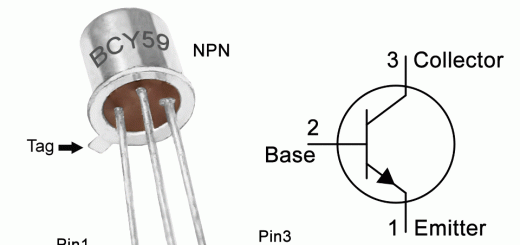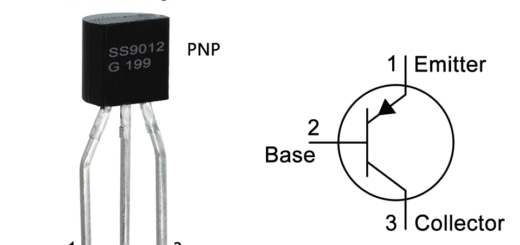BC537 Pinout, Equivalents, Features, Applications and Other Important Details
BC537 is a TO-92 package NPN transistor designed to be used in audio and other general purpose applications. In this post we are going to discuss BC537 pinout, equivalents, features, applications and other important details of this transistor.
Absolute Maximum Ratings:
- Package Type: TO-92
- Transistor Type: NPN
- Max Collector Current(IC): 1000mA
- Max Collector-Emitter Voltage (VCE): 60V
- Max Collector-Base Voltage (VCB): 60V
- Max Emitter-Base Voltage (VEBO): 6V
- Max Collector Dissipation (Pc): 625 miliWatt
- Max Transition Frequency (fT): 100 MHz
- Minimum & Maximum DC Current Gain (hFE): 40 – 400
- Max Storage & Operating temperature Should Be: -55 to +150 Centigrade
PNP Complementary:
PNP Complementary of BC537 is BC538
Replacement & Equivalent
Bc538, 2SC4145, NTE382, MPS651, ECG382, ECG192
BC537 Transistor Explained / Description:
BC537 is a very interesting small signal bipolar junction transistor available in TO-92 package. The transistor has some very interesting features such a good collector current, high collector-emitter voltage, transition frequency of upto 100MHz, availability of the PNP transistor and DC current gain of 40 to 400.
Looking at the absolute maximum ratings of the transistor: the collector-emitter voltage is 60V, collector current is 1A, collector-base voltage is also 60V, power dissipation is 625mW and the junction and storage temperature range is -55°C to 150°C.
The transistor is available in four different versions according to its DC current gain and you can identify them with the help of a code number written after the part number. If that code number is 6, the DC current gain or HFE is 40 to 100, code number 10 means an HFE is 63 to 160, number 16 indicates an HFE of 100 to 250, and number 25 means the HFE is 160 to 400.
The transistor can be used in audio and a wide variety of other applications. A detailed list of its applications can be found below under the ‘Applications’ heading.
How to Use This Transistor:
This is a BJT transistor and it has three pins which are emitter, base, collector. The procedure for using the transistor is pretty straightforward. A signal is applied to the base pin, the emitter pin is connected with the negative rail of the circuit, and output taken from the collector. Here, we have described a simple usage procedure, but to build a proper working circuit, you must have to use some passive components according to the circuit you want to make. And for this purpose need some basic electronics knowledge and experience of electronics.
Applications:
Signal Amplification
Audio Amplifiers
RF Circuits
Sensor Circuits
Audio Preamplifiers
Darlington Pairs
Switching loads under 1A
And more…
Safe Operating Guidelines:
To safely operate the transistor, it is important to not use it to its absolute maximum ratings and always stay at least 20% to 30% below them. Check its pin layout before using the transistor, and always make sure that the transistor stays within the temperature range of -55°C to 150°C.
Datasheet:
To download the datasheet just copy and paste the below link in your browser.
https://www.alldatasheet.com/datasheet-pdf/view/75204/MICRO-ELECTRONICS/BC537.html



